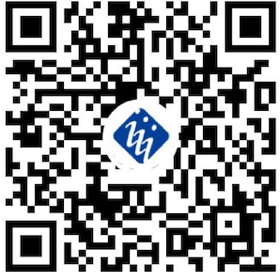
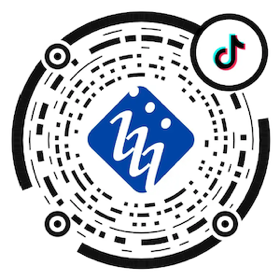
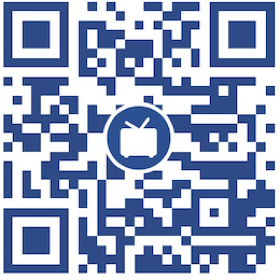
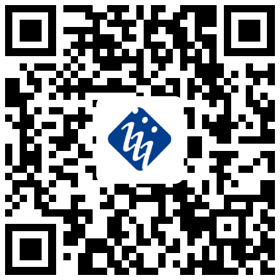






2010年是JAAS创刊25周年,同时也是ICP-MS第一篇论文发表30周年。值此之际,JAAS近日在清华大学举办了“JAAS 25周年学术讨论会”。会议期间,仪器信息网编辑就原子光谱的发展及JAAS的办刊特色采访了JAAS评论编辑Norbert Jakubowski博士,JAAS编辑May Copsey博士和英国皇家化学会(RSC)出版人Niamh O'Connor博士。

JAAS评论编辑Norbert Jakubowski博士
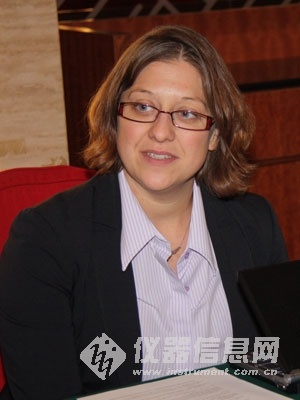
JAAS编辑May Copsey博士
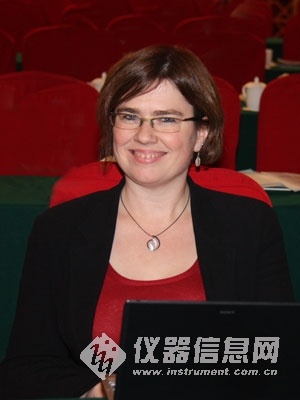
英国皇家化学会出版人Niamh O'Connor 博士
Instrument:2010是JAAS创刊25周年,您能谈谈为何选择在北京举办25周年学术研讨会吗?
May Copsey:这次学术会议是JAAS 25周年系列纪念活动之一,对于我们来说,纪念JAAS创刊25周年十分重要,不仅要回顾JAAS 25年来的发展历程,同时也是探索未来的发展之路。随着中国经济以及中国分析科学的快速发展,我们选择在北京举办此次会议,期望同中国学者一起探讨原子光谱的发展。
Norbert Jakubowski:另外一个重要的原因是我们有许多朋友在这里,尤其是张新荣教授帮忙负责组织这次会议,我们感到非常高兴。
Instrument:25年来,JAAS收录的论文中,有关ICP、AAS、AFS、XRF的论文所占比例有着怎样的变化?有哪些重要的变化?
Norbert Jakubowski:确实这些年来,不同原子光谱技术的论文比例发生了很大的变化。研究者们对于AAS的兴趣正在逐渐降低,所以JAAS收录的相关论文也越来越少。1986年,JAAS收到的稿件中50%是关于AAS,而2006年,关于AAS的论文只有10%。
相反,有关ICP以及ICP-MS的论文越来越多。自从ICP-MS问世以来,它的发展十分迅速。目前JAAS收录的论文中60%都是有关ICP-MS的,其中激光剥蚀与ICP-MS联用技术(LA-ICP-MS)也是热门研究领域,早在2005年JAAS中有关LA-ICP-MS的论文量几乎和AAS一样多。JAAS编委Günther博士曾预测说也许有一天所有的ICP-MS都将与LA联用。
当然,JAAS不是只有ICP-MS,我们依然会收到有关AAS的论文,但大多是有关连续光源原子吸收光谱的。此外,关于辉光放电原子发射光谱(GD-OES)以及辉光放电质谱(GD-MS)的基础研究及应用研究也在逐渐增多。
至于XRF,最初JAAS在XRF领域并不是特别具有优势,所以收录的有关XRF的论文量并不多。但最近几年,工业分析领域有一大批人在使用XRF仪器。据一厂商介绍,如今ICP-MS的市场容量在20000台左右,而XRF的市场容量在2000000台,所以这对于JAAS也是一个非常重要的机遇。
Instrument:根据JAAS收录的论文分析,目前原子光谱分析技术的应用领域主要集中在哪些方面,在哪些研究领域将会取得重大突破?
Norbert Jakubowski:谈到原子光谱在不同领域的应用,我们也发现有了许多变化。早期JAAS收录的许多论文大部分是关于地质科学、材料科学以及环境科学。从2006年的统计数据来看,在前二十年里,JAAS收录的有关环境分析的论文量占30.2%,材料分析占16.8%。但最近几年原子光谱的应用研究逐渐转向了生物医药,以及纳米材料分析等领域。预计将来,原子光谱技术将在这些新的应用领域发挥更大的作用。
Instrument:从投稿情况来看,请谈谈目前不同国家和地区原子光谱技术的研究情况,各有哪些特点和优势?其中,对于中国的原子光谱论文您有何看法?
May Copsey:从1986-2006年间,JAAS收到的投稿论文中,57%来自欧洲,24%来自北美,12%来自亚洲,4%来自南美,1.6%来自澳洲,1.6%来自非洲。目前,JAAS依然在欧洲能够收到许多投稿,特别是有关激光剥蚀技术的基础研究。来自亚洲的论文量正在逐年增长,预计这种趋势还将继续。中国的投稿量现在也保持了持续增长的趋势,特别是在地质研究和纳米分析领域。
Niamh O'Connor:事实上,目前不同国家有着不同的研究热点,这主要取决于一个国家的经济水平以及发展重点。除此之外,研究者的兴趣和工作领域也会有影响。
Instrument:请谈谈原子光谱仪器的发展?
Norbert Jakubowski:原子光谱仪器正逐渐朝着体积更小、灵敏度更高的方向发展。每年,都有许多新型仪器上市,但事实上我们并没有看到有重要突破的新仪器。例如,如果要分析单纳米粒子,就需要非常高的时间分辨率,但是没有生产商能解决这一问题。大家对于新兴市场的关注还较少,如医药分析市场,这个市场要比环境监测大10倍甚至百倍。我认为完全可以利用原子光谱仪器为医疗保健提供分析手段,例如癌症诊断等,这将为原子光谱的应用提供更广阔的空间。
去年,加拿大一家仪器公司推出一种新型ICP飞行时间质谱仪用于分析检测单个癌细胞。这是一个非常成功的想法,因为许多医疗工作者利用荧光检测方法同时只能检测细胞中的四个生物分子,而利用这款新型ICP飞行时间质谱仪可以同时检测二十多个生物分子。还有许多新的领域,原子光谱也可以发挥重要作用,但是我们首先得向这些领域的分析工作者证明原子光谱仪器确实能帮助他们完成检测目标。
现在,还有一些研究者在从事原子光谱仪器的基础研究,如新型质谱离子源或其他相关的激发源的开发,以拓宽原子光谱的应用范围,这对于仪器获得好的分析结果也十分重要。还有些仪器公司正在推出新的ICP-MS接口,但现在我们还没有完全弄清楚等离子体是如何转入质谱仪的,所以仪器的发展还需要基础研究的支持。
Instrument:请您谈谈JAAS的办刊特色?25年来,JAAS如何在保持其在原子光谱分析领域的绝对领先地位?对于JAAS未来的发展,您目前有哪些具体的规划?
May Copsey:在JAAS刊登的论文都需要经过严格的审稿程序,每一篇收录的文章都会经过编辑们的仔细审查。一般,我们会选取相关领域的两位专家评审稿件的科学性,他们会返回自己的意见,并对每一处修改都给予合理的建议,然后我们会考虑是否收录这篇稿件,通常我们接收到的50%-60%的稿件都会被收录。
我们一定得感谢专家们的支持。他们花很多时间去审查稿件,对在JAAS上发表的论文都给予特别细致的审稿意见,这对于保持在JAAS的高质量十分重要。此外,研究者们选择将他们最好的研究成果在JAAS发布对提高JAAS的影响力也非常重要。
Niamh O'Connor:作为英国皇家化学会的出版人,最重要的事情是了解不同学术团体的研究兴趣。我们出版的所有刊物,包括JAAS,和在不同国家不同研究领域的编委们、顾问、审稿人、作者以及读者保持非常紧密的联系。他们可以帮助我们去了解不同学术团体的要求,可以帮助我们设立非常高的标准。英国皇家化学会在中国也有许多会员,如高山教授、张新荣教授,他们给我们的工作很大的帮助。
Norbert Jakubowski:我们的编辑还经常去参加一些重要的学术会议,通过交流,可以更好的与编委、作者及读者们保持紧密联系,这在一些期刊中是很少见的,我们在尽力使自己的期刊能独具特色。
May Copsey:至于未来的发展规划,我们依然非常希望能够提高JAAS中的原子光谱基础研究。目前在JAAS收录的论文中,大多数是有关应用的,而基础研究的论文量较少,但是原子光谱基础理论的研究对于原子光谱充分发挥其潜能也是十分重要的,所以JAAS期望能收到更多有关基础研究的原子光谱论文。但我们也意识到现在的刊物数量越来越大,因此,在保持了良好的基础同时,我们也可以将内容灵活的延伸至读者和作者的研究领域,例如增加对原子光谱在地质学,生物学和其他跨学科研究领域的关注。

采访现场
特别感谢:清华大学张新荣教授在此次采访过程中给予我们的支持与帮助!
附录:《Journal of Analytical Atomic Spectrometry》http://www.rsc.org/jaas
采访编辑:秦丽娟
Atomic Spectrometry:Playing an important role in many new applications
2010 is the 25th anniversary of the JAAS, and also is the 30th anniversary of the first published ICP-MS paper. On this occasion, JAAS has held a one-day symposium in Tsinghua University to celebrate the event. During the symposium, we interviewed Dr. Norbert Jakubowski (Reviews Editor of JAAS), Dr. May Copsey (the Editor of JAAS), and Dr. Niamh O'Connor (Publisher of RSC Publishing). They talked about the development of atomic spectrometry, and how JAASmaintain the absolute leading position in the area of atomic spectrometry?
Instrument:2010 is JAAS 25th anniversary, could you please talk about the reason for holding the symposium in Beijing?
May Copsey:This symposium is a part of the celebrations of JAAS'25th birthday. It's very important for us to celebrate JAAS' 25th anniversary. We not only look back the previous 25 years of JAAS, but also take the opportunity to look forward at the meeting, and hopefully to see what development will be coming in the future. For the development of Chinese market and the rapid growth on analytical sciences in China, we hold our symposium here in Beijing to look forward the future development of atomic spectrometry.
Norbert Jakubowski:Another important reason is that we have many good friends here and we are lucky to have Professor Xinrong Zhang here as our host.
Instrument:Could you please introduce the proportion of the papers about ICP, AAS, AFS, XRF included in JAAS? What changes had happened to the amount of the papers about ICP, AAS, AFS, XRF in the past 25 years?Which changes do you think are quite important?
Norbert Jakubowski:We have seen significant changes in all these areas. The interest in AAS is declining from year to year, so we are getting fewer and fewer papers on this topic. The number of AAS papers has decreased during 1986 to 2006 (50% to 10% of all manuscripts). The interest in ICP-MS and ICP emission spectrometry is still increasing. Since ICP-MS was launched in the market, it has developed very rapidly. Now at least 60% of all papers published in JAAS relate to ICP-MS. For example, LA-ICP-MS is one of the hot topics in JAAS. In 2005, the number of LA-ICP-MS nearly reached the number of AAS publications. Dr. Günther once predicted that there might come a day when all ICP-MS systems will be coupled to laser ablation "nebulizers". Certainly we don't only have ICP-MS, and we're still getting a certain amount of papers from AAS, but now we are also seeing more papers submitted on continuous source AAS. The number of fundamental and applied studies in GD-OES and GD-MS is growing too.
As to XRF, at the beginning, JAASwas weak for X-Ray technique, so we haven't had too many papers from XRF. Now during the last couple of years, in industry those people who applied XRF instrument is a big family. According to one manufacture's introduction, nowadays, we have almost 20000 ICP-MS instruments in the market, but we have more than 200 0000 XRF. So this is a much bigger opportunity.
Instrument:According to JAAS' articles, which field do atomic spectrometry analysis technologies mainly focus on at present? In which aspect will they get breakthrough?
Norbert Jakubowski:Talking about the application of atomic spectrometry in various areas, we also have seen many changes. Early on, we saw many papers coming from geological sciences, material sciences and a lot of environmental studies. From 1986 to 2006, according to JAAS' articles, 30.2% are about environmental studies, 16.8% about material sciences. But now we see that the scope is moving into medical and biological applications and to material sciences again, particularly in the direction of nano sciences. Nowadays, we see an increasing number of papers focusing on applications, rather than fundamental developments. In the future, we expect that atomic spectrum analysis technology will play a bigger role in these new applications.
Instrument:According to the contribution situation, could you please introduce the research situation of atomic spectrometry in different countries and areas recently? What do you think about the atomic spectrometry papers of China?
May Copsey:From 1986 to 2006, the manuscripts contributed to JAAS are 57% from Europe, 24% from North America, 12% from Asia, 4% from South America, 1.6% from Australia and1.6% from Africa. At the moment, we still receive lots of papers from Europe, particularly in laser ablation fundamentals. The number of papers from Asia is growing quite strongly year after year, and we expect the trend will continue. We expect that the number of papers from China will continue to grow, particularly in the areas of geological research and nanoanalysis.
Niamh O'Connor:In fact, at present, different countries have different hot research areas. It depends on what is important to the country and the country's economical level. Besides, people's research interest and the areas where they work also have influence.
Instrument:How about the development of atomic spectrometry instruments?
Norbert Jakubowski:At the moment, the instruments are getting smaller, more powerful, and more sensitive. From year to year, we see new instruments launched into the market, but we don't see the real breakthrough. For example, to analysis the single nanoparticle, you have to use the instrument with higher time resolution, but no manufacturer has solved the problem successfully. They haven't exploited the new market. Taking medical applications for example, the new market is ten times bigger than the environmental market, possibly even a hundred times bigger. If we could provide analytical methods for medical healthcare, cancer detection for instance, I would say we can open quite new application areas with the instrumentation. Last year, one company in Canada, has launched a new ICP-TOF instrument based on mass spectrometer detection technique for the detection of a single cancer cell. It's a very successful idea. Because medical people can measure a single cell by fluorescence detection which only can detect four different biomolecules at the same time, but the ICP-TOF can measure up to twenty biomolecules at the same time. There are many other new applications in the atomic spectrum analysis, but we have to convince the people working in other areas that we have the instrumentation and analytical methods they are looking for.
Now there are people working on fundamental research, novel ion sources in MS or other related sources research for new applications. Those put a lot of new emphasis into understanding how we can get better analytical results. Companies now introduce new interfaces for ICP-MS. We haven't fully understood the processes that are taking place during the transfer of plasma into mass spectroscopy, so we still need more fundamental research.
Instrument:Finally,Could you please introduce the characteristics of how JAAS manages the publication process? How does JAAS maintain the absolute leading position of atomic spectroscopy for 25 years? Could you please introduce the development plan of JAAS in the future?
May Copsey:The way we manage the publication of our articles is through our rigorous refereeing procedure. Each article selected for publication in the journal is looked after by our team of editors. We select two experts in the field as referees who comment on the science of the paper. They send their recommendations on the article, and with good suggestions for any changes. We take the recommendations into consideration to decide whether to publish the article in JAAS. As a rule, 50%-60% articles we receive will be published.
We have to say thanks for the support from the community. They take the time to review the papers for us, and they comment on the papers published in the JAAS in great detail. This really helps JAAS to maintain the very high quality of published articles. People also choose to send their best works to JAAS which is also very important.
Niamh O'Connor:As a Publisher of RSC, the most important thing for us is to know the interest of different communities. In all of our journals, including JAAS, it's very important for us to maintain contact with all the editorial and advisory board members as well as authors and referees who come from different countries and work on different researches. They help us to understand what different communities want, and to make sure they set very high standard for us. RSC journals also have a lot of Board members from China, such as Prof. Shan Gao and Prof. Xinrong Zhang, that really make a difference.
Norbert Jakubowski:Our editors are always present at each of those important conferences to talk with people. We have very close relationship with authors, readers, editorial boards. RSC Publishing tries to really make the difference from other periodicals.
May Copsey:As to the plan for the future, we still very much like to see JAAS promoting fundamental development for atomic spectrometry, and fundamental atomic spectrometry research is still very important for their potential. We realize that the number of publications is growing rapidly, so we will maintain a good foundation, and at the same time be flexible to respond to what our readers and authors are doing, such as increasing our focus on applications in geology, biology, and other interdisciplinary research areas.
[来源:仪器信息网]
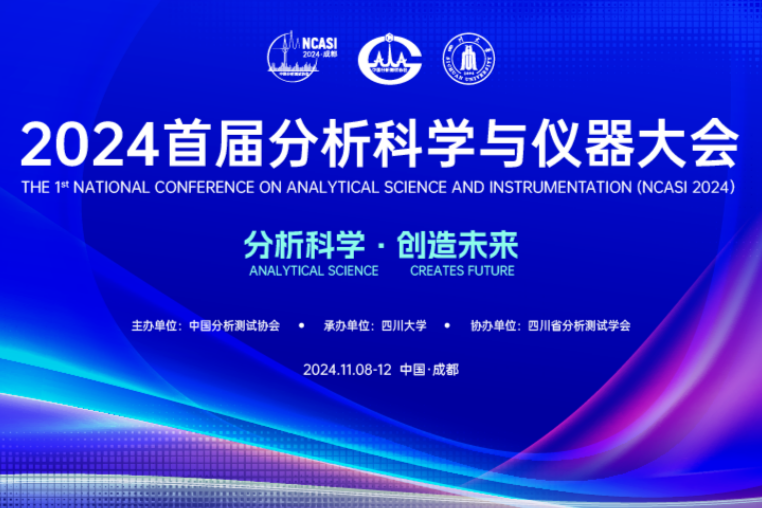
2024.08.16
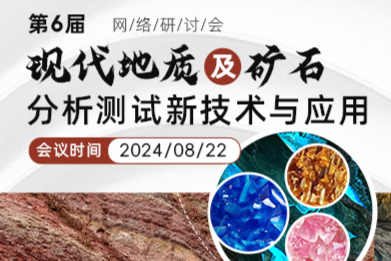
2024.08.14
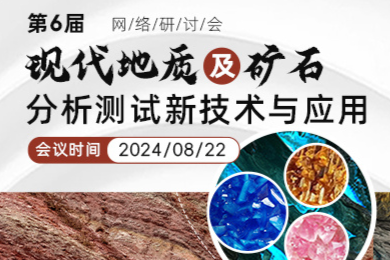
2024.08.09
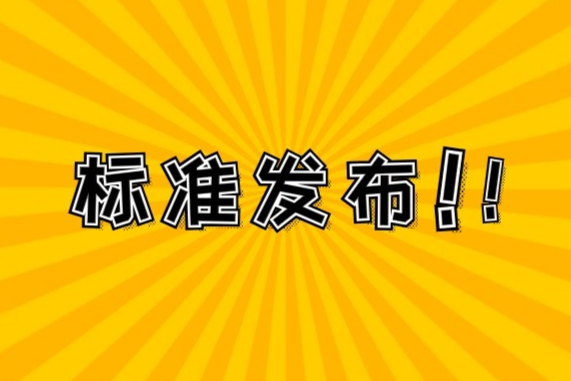
37项地质样品同位素分析标准发布,LA-ICP-MS、TIMS等技术成关键
2024.08.09
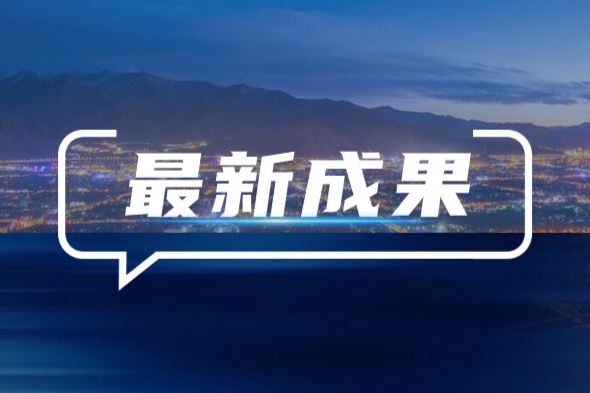
2024.07.25
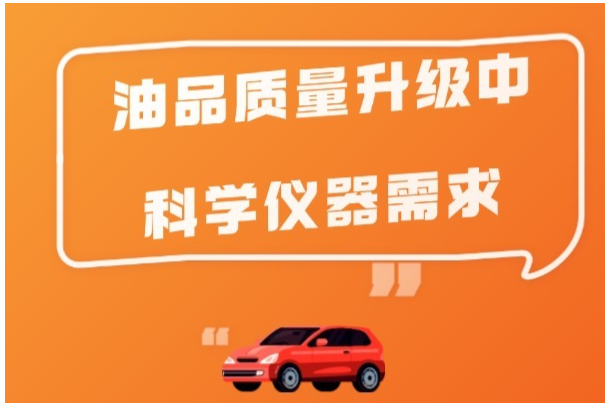
2024.07.24
版权与免责声明:
① 凡本网注明"来源:仪器信息网"的所有作品,版权均属于仪器信息网,未经本网授权不得转载、摘编或利用其它方式使用。已获本网授权的作品,应在授权范围内使用,并注明"来源:仪器信息网"。违者本网将追究相关法律责任。
② 本网凡注明"来源:xxx(非本网)"的作品,均转载自其它媒体,转载目的在于传递更多信息,并不代表本网赞同其观点和对其真实性负责,且不承担此类作品侵权行为的直接责任及连带责任。如其他媒体、网站或个人从本网下载使用,必须保留本网注明的"稿件来源",并自负版权等法律责任。
③ 如涉及作品内容、版权等问题,请在作品发表之日起两周内与本网联系,否则视为默认仪器信息网有权转载。
![]() 谢谢您的赞赏,您的鼓励是我前进的动力~
谢谢您的赞赏,您的鼓励是我前进的动力~
打赏失败了~
评论成功+4积分
评论成功,积分获取达到限制
![]() 投票成功~
投票成功~
投票失败了~